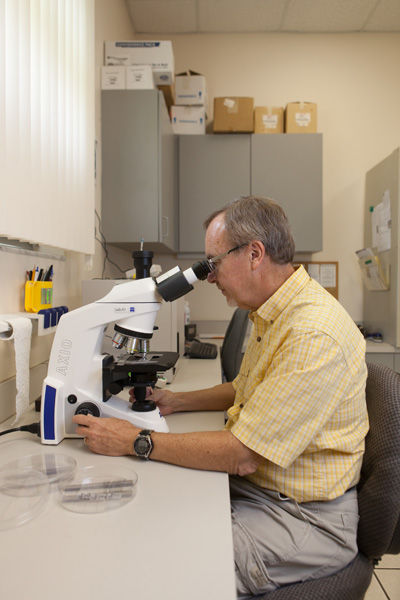They’ve been around over 170 million years. They’re often nearly invisible to the naked eye. They can stalk their victims on foot or through the air and many of their females have an innate appetite for human blood.
They are mosquitoes, and, besides bestowing those annoying itchy bites, they can make you very sick.
Mosquitoes can and still do spread diseases including yellow fever, malaria, dengue fever, West Nile virus, eastern equine encephalitis, St. Louis encephalitis and chikungunya.
Cheryl Dunn, environmental manager for the Florida Department of Health in Indian River County, says “Disease prevention is very important” to both the Indian River Mosquito Control District and the health department and both groups are constantly monitoring the various virus strains found here.
Nationwide there are over 175 known species of mosquito with more than 3,000 more varieties worldwide. In the course of a wet Vero Beach summer, it can seem as though all 3,100-plus species are just outside our screened porches.
That’s not entirely surprising. From the early 1500s through the mid-1800s, the whole east coast of Florida from Jacksonville in the north to well past the Palm Beaches in the south and as far west as Winter Haven, was known to mapmakers as “Los Musquitos” and later, as “Mosquito County.”
It was not meant as a term of endearment.
Doug Carlson, director of the Indian River Mosquito Control District and Don Shroyer, medical entomologist for the district know the real buzz about Florida mosquitoes and it may not be exactly what you think it is.
“Our mosquito control district was the first one created in Florida,” explains Carlson. The year was 1925. That means Carlson’s department now has some 90 years of experience combating the 50 different species of mosquitoes found in the Vero area.
The obvious assumption might be that the IRMCD was founded to help prevent catastrophic outbreaks of mosquito-borne diseases such as the yellow fever epidemic in Jacksonville of 1888 that infected 5,000 of the city’s 13,000 residents, but, according to Carlson, that is not entirely true.
He says control of nuisance mosquitoes, not disease-bearing buzzers, was the initial driving force for the creation of the district, which was formed, first and foremost, to get rid of “salt marsh mosquitoes – the ones that are produced in the marshes that line the Indian River lagoon. (According to the University of Florida, salt marsh mosquitos can carry some diseases, but are not a major source of infection.)
Shroyer chimes in saying that while, “the public demands mosquito control for the pest factor, the disease-control aspects piggyback on that effort.”
Actually, it’s not so much “piggies” as it is chickens that help the IRMCD and health department monitor threats to the public health from mosquitoes.
The IRMCD’s “chicken sentinel” program is, in many ways, unique because of its simplicity and cost effectiveness. In a nutshell, the district monitors carefully raised chickens at eight locations county-wide. It takes blood samples that show which – if any – mosquito-borne viruses are present in any given area at any given time. (The birds, when bitten by virus-carrying mosquitoes, do not develop symptoms of the diseases but they do produce antibodies in their blood that entomologists like Shroyer or those at Vero’s own University of Florida’s Medical Entomology Laboratory can easily detect.)
That’s a far less expensive and infinitely more efficient method of tracking potential outbreaks than attempting to capture the millions of individual mosquitoes county-wide that would be required to form a valid sample group and then analyzing those results.
“Our most important role,” explains Carlson, “is we need to notify the public if we see an increased risk of infection.”
The bigger winged threat to public health in the Vero area, however, may actually be the Airbus A380. That’s because a surprisingly large percentage of mosquito-borne diseases reported here each year are actually acquired outside the U.S. during vacations and business trips. There were, for example, some 400 cases of chikungunya reported in Florida last year, says Dunn, “but only 11were locally acquired” and those were about 50 miles southwest of Vero in Martin County.
That said, Carlson, Shroyer and Dunn all agree that when it comes to mosquito control, Vero area residents are frequently their own worst enemies. While the IRMCD and health department do what they can to combat both larval and adult mosquito populations and to eliminate potential breeding areas, homeowners frequently offer these insects ideal locations to lay eggs.
Rain gutters clogged by pine needles or other debris, bromeliads in the garden and backyard water features along with discarded tires are all ideal mosquito egg-laying sites. Even the most well-manicured lawns of million dollar homes often offer these pests a safe haven for starting the next generation of mosquitoes.
(Discarded and illegally dumped tires are a huge concern for both Carlson and Dunn. “We go around and scour the area,” Carlson says, including roadside ditches and wooded areas, “and have collected about 940,000 tires so far.”)
Is it likely a mosquito bite in Vero this June will lead to yellow fever, malaria, dengue fever, West Nile virus, eastern equine encephalitis, St. Louis encephalitis or chikungunya?
Statistically, no.
Then again, statistically speaking, there shouldn’t have been nearly 5,000 cases and almost 500 deaths from yellow fever in Jacksonville at the turn of the last century. That’s why the people at IRMCD and the Florida Department of Health, along with their sentinel chickens, continue to monitor mosquito activity here in Indian River County.

